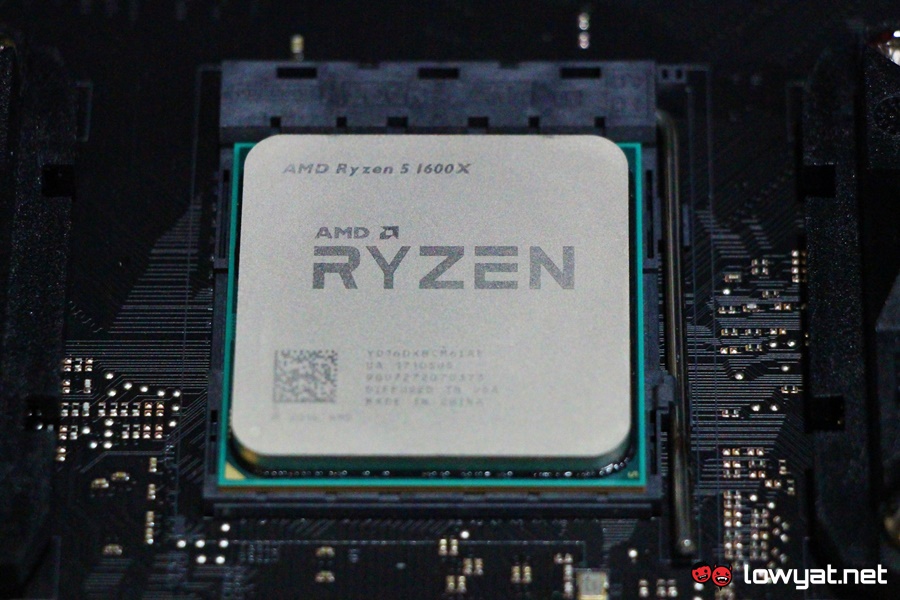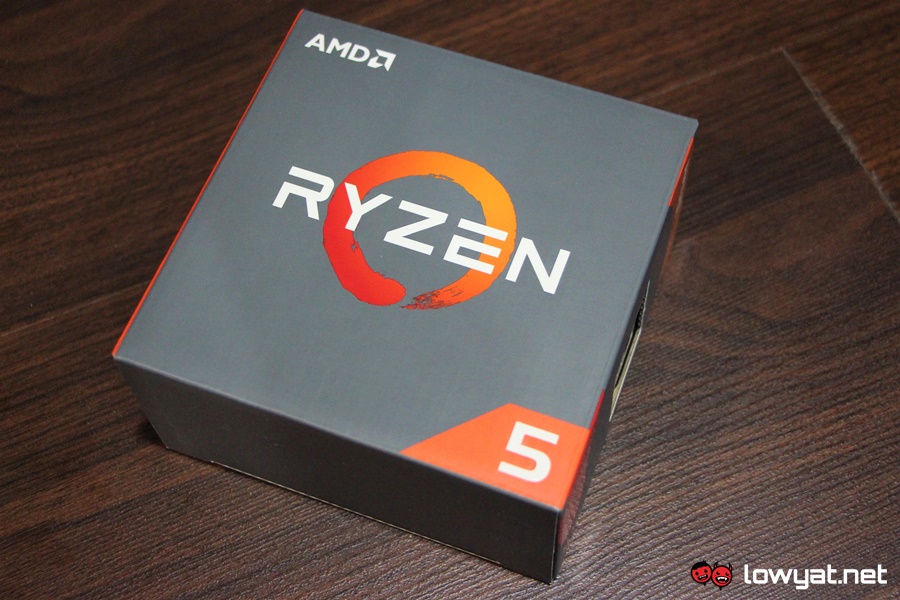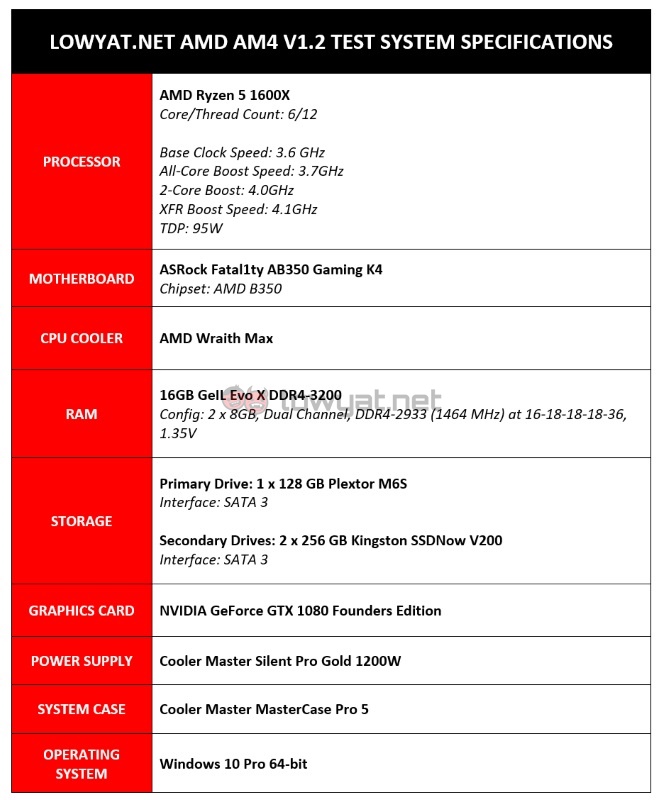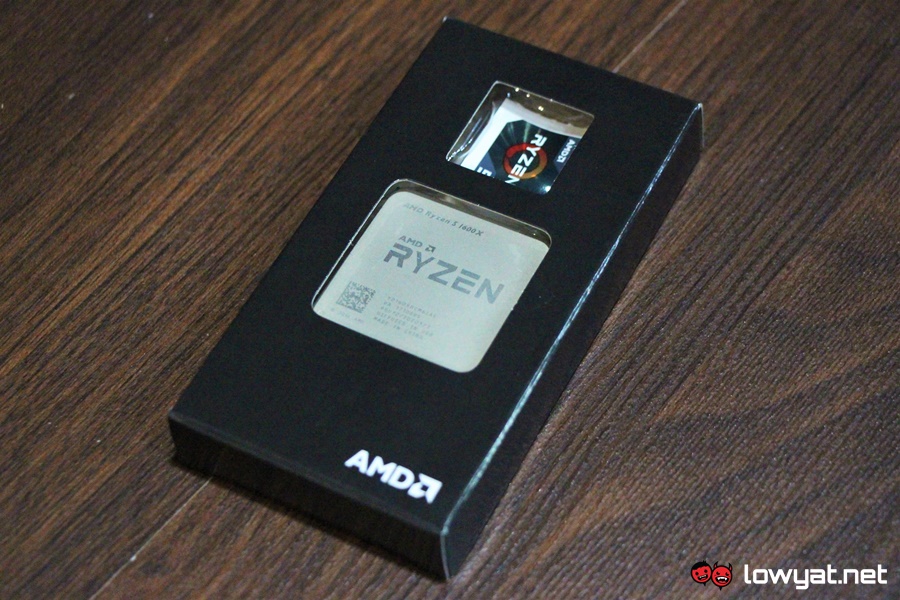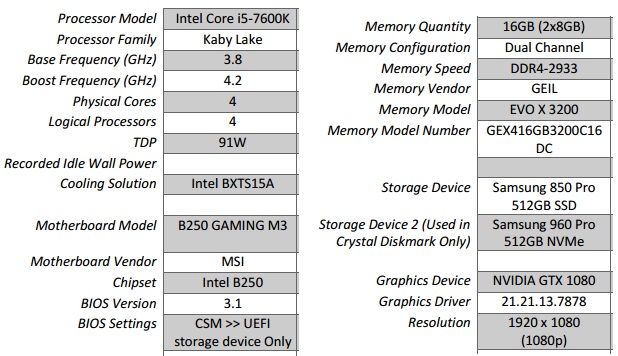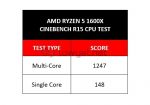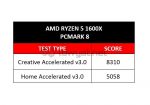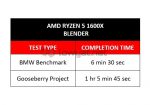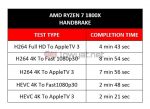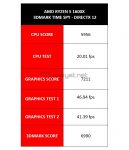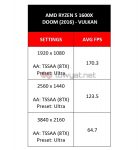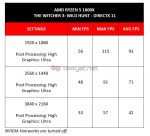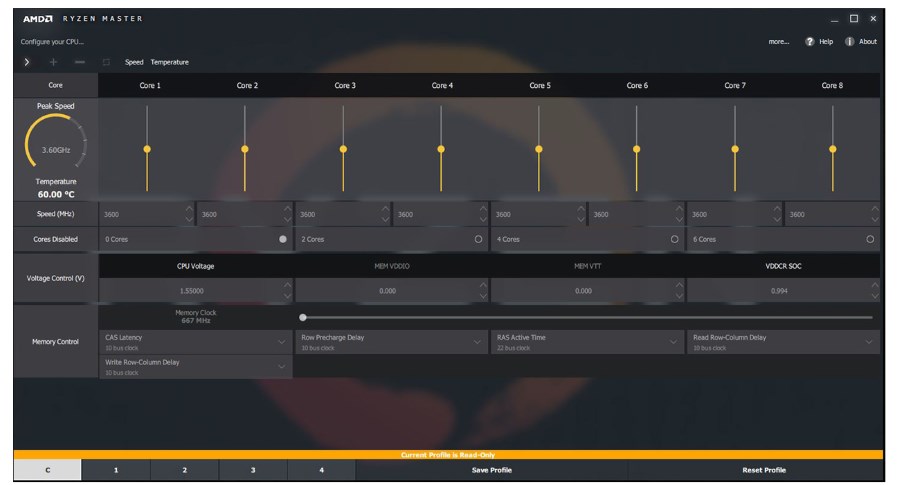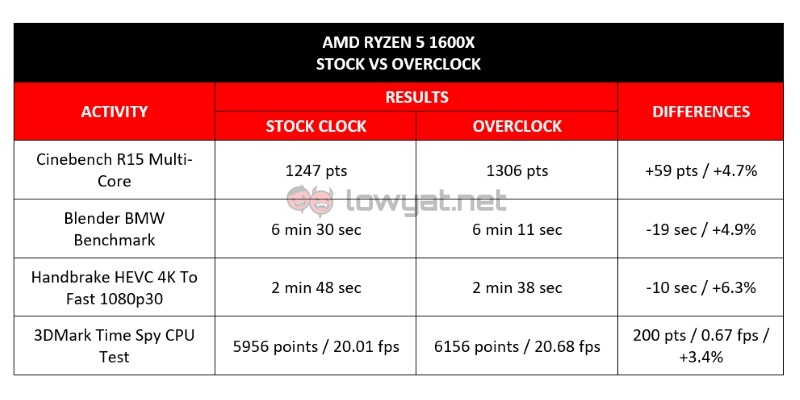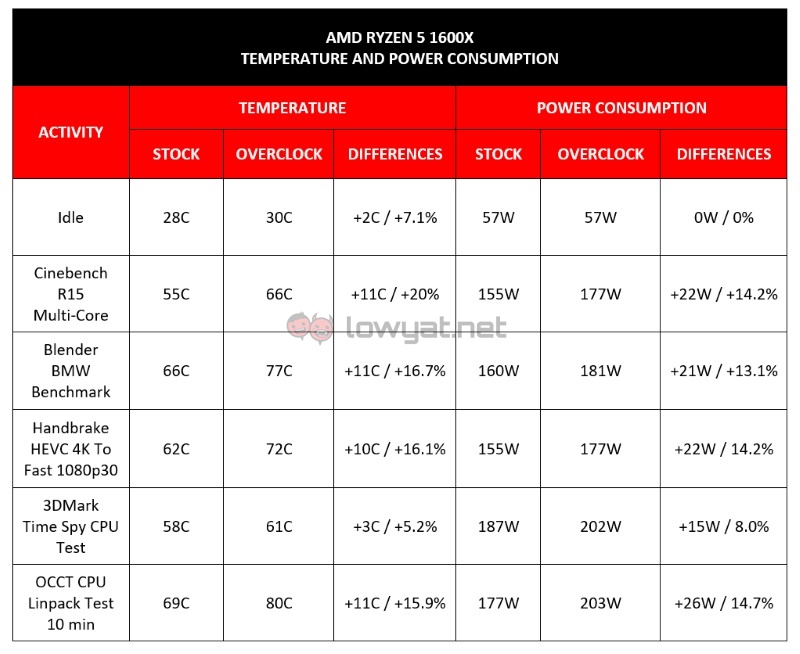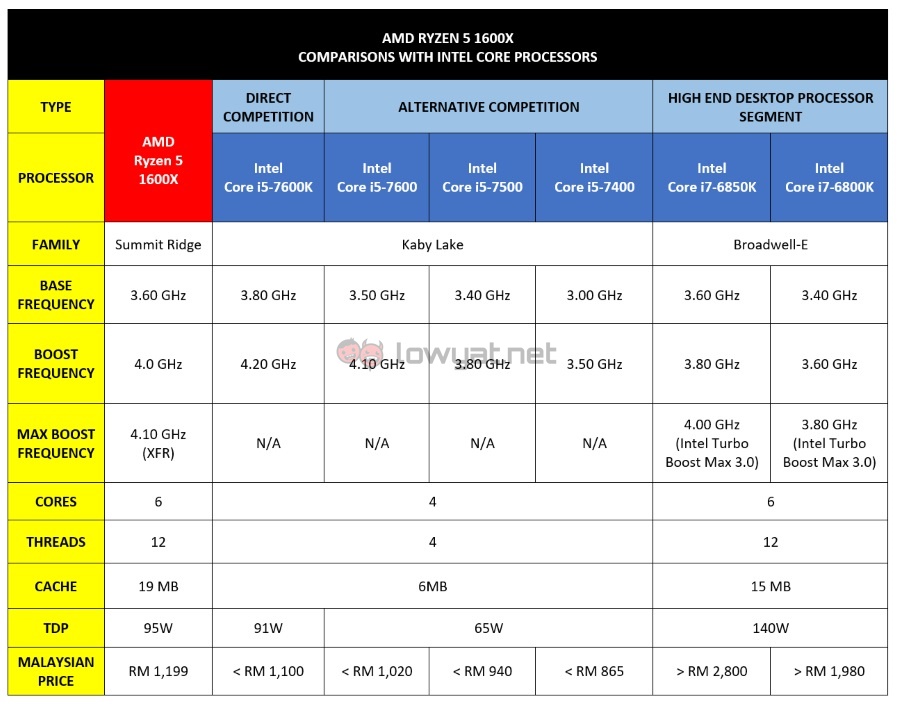After falling behind Intel for the past few years, AMD has finally launched a rather competitive product in the form of the Ryzen 7 processors last month. However, they are made to cater to high end users which means they are quite costly – even though Ryzen 7 processors are still more affordable than what Intel has to offer.
This is where Ryzen 5 comes into the picture. Designed for the mid-range market, the lead processor in this particular series is the Ryzen 5 1600X which offers 6-core 12-thread setup with a base clock speed of 3.6GHz, and is able to go as high as 4.0GHz through the chip’s Precision Boost feature. It can even shoot up to 4.1GHz if the thermal solution is good enough – thanks to another feature within the Zen microarchitecture called XFR.
Priced at RM 1199, AMD positions the Ryzen 5 processors as the preferred solution for 1080p gamers. That being said, Ryzen 5 1600X’s specific aim is the 4-core 4-thread Intel Core i5-7600K, which puts the chip in a rather interesting situation that we will explain later in the review.
Lowyat.NET Test System
Display used in this review is the 28-inch Acer Predator XB281HK 4K Gaming Monitor.
With the exception of the chip, motherboard, RAM, and cooler which belonged to our Ryzen 5 1600X review kit that was provided by AMD, other components in this test system were the same parts that we used for our Ryzen 7 1800X review.
Before we go further…
If you went through our review of the Ryzen 7 1800X, you should be aware that we don’t have an Intel-based test system for the time being. Hence, this review is meant to be a stand-alone review of the Ryzen 5 1600X although we might return to it again once we are able to proceed with our plan to build an Intel Kaby Lake-based test system very soon.
That being said, we do understand that we can’t run away from comparisons which is why we still include several of them in this review. These comparisons are using figures from an Intel-based system that AMD has used for internal testing which has this configuration:
With that, let’s start with some benchmarks!
Performance Tests
Workload source: H264 Full HD and 4K video // HEVC 4K video // BMW Benchmark and Gooseberry.
As usual, we first put the Ryzen 5 1600X through several benchmarks and applications that represents probable usage scenarios for the processor. For example, Cinebench and Blender represents 3D rendering while Handbrake is meant for video conversion.
Additionally, there is also ray tracing through POV-Ray, and file compression with 7-Zip. Not to forget, we also tested the processor with the highly popular Futuremark PCMark 8. Our Ryzen 5 1600X review chip went through all these applications without any issues.
Gaming Tests
In a rather interesting outcome, all the results above are almost identical to the results of our gaming tests for Ryzen 7 1800X. The only exception to this is the 3DMark’s CPU test (which focuses solely on the chip itself) – and the test showed that the differences in computing power is 32.8% lower than Ryzen 7 1800X.
This in general showed Ryzen 5 1600X is fairly competent, although we are still aware that Intel’s offerings are still ahead of AMD in gaming according to plenty of reviews throughout the world.
Overclocking
To overclock the Ryzen 5 1600X, we utilize AMD’s own overclocking tool called Ryzen Master which made its debut alongside Ryzen 7 last month. As mentioned previously, the chip’s Precision Boost and XFR features are disabled when it goes into manual overclocking mode.
As per the case with Ryzen 7 1800X, AMD has advised users not to run Ryzen 5 1600X at more than 1.45V in order to preserve its longevity. For our test, we managed to run the chip at a stable speed of 3.9GHz without tweaking its default voltage setting.
These are how the 8.3% increase of clock speed translate to in real life performance:
Thermal and Power Consumption
With AMD Wraith Max as its cooler, the Ryzen 5 1600X runs at a relatively acceptable temperature and only hits the 80°C mark once it is overclocked. Even though it has the same TDP as the Ryzen 7 1800X, the Ryzen 5 1600X consumes less power than its 8-core 16-thread sibling – which, logically speaking, isn’t a surprise.
However, the power consumption shoots up once the chip goes into manual overclock mode. Hence, we still recommend having a capable power supply to go with the Ryzen 5 1600X especially for users who want to overclock the chip or utilize CPU intensive applications.
Competition
As you might be able to see from the table below, Ryzen 5 1600X is within the same price range of Intel Core i5-7600K – even though there might be price differences of around RM90 to RM100 depending on where you purchase the Intel chip from:
This means that the Ryzen 5 1600X chip has no price advantage over its rival, unlike the Ryzen 7 1800X. Nevertheless, AMD still have some strengths in terms of value for money – considering that the Ryzen 5 1600X carries more cores and threads even though its IPC is lower than Intel’s chip.
While AMD’s offering might not be as good as its competitor in terms of gaming, the Ryzen 5 1600X really shines in applications that are able to take advantage of multi-core and multi-thread capabilities as shown in some of the tests below:
According to AMD, the value proposition especially for enthusiasts also apply in the bigger picture as well, when the Ryzen 5 1600X is combined with AMD B350-based motherboards. This is because Intel B250-based motherboards (which are equivalent in terms of price points with AMD B350 motherboards) can’t be used for overclocking – something that can only be done on the costlier Intel Z270-based motherboards.
Conclusion
The Ryzen 5 1600X proves that AMD once again has a highly competitive product on its hands, even in the mid-range segment. While the chip might trail behind Intel’s offering in terms of gaming, the Ryzen 5 1600X excels in many other tasks – providing better value for users who are not into gaming.
Even though the chip doesn’t have any price advantage over its direct competitor here in Malaysia, the additional features that AMD B350-based motherboards have over their Intel B250-based motherboards further strengthen the chip’s overall value proposition.
All in all, the new AMD Ryzen 5 1600X is the a great option for users who are looking for an all-rounded performer in the mid-range segment.
Follow us on Instagram, Facebook, Twitter or Telegram for more updates and breaking news.


